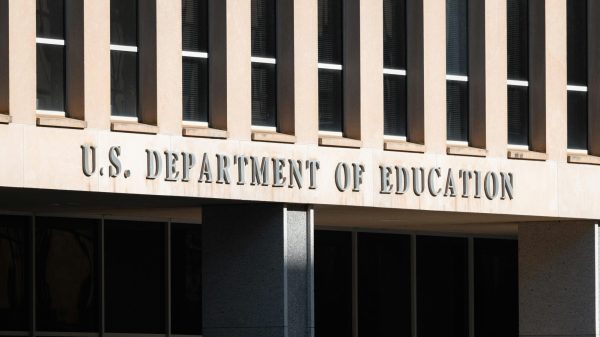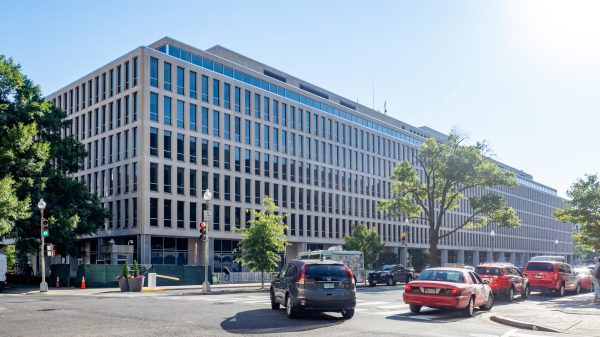Oklahoma and federal education experts say shortage goes beyond lack of teachers
A teacher shortage crisis continues to be an issue across the U.S. three years after the start of the COVID-19 pandemic. Photo by U.S. Department of Education.
WASHINGTON – As a teacher shortage crisis worsens in the U.S. three years after the beginning of the COVID-19 pandemic, national and state education leaders said a structural disruption is creating shortages in the system.
Oklahoma and several other states are facing a teacher shortage exacerbated by the pandemic, causing many teachers to get laid off or leave the profession due to mental health issues or low compensation. And the shortage is not only of teachers but of the education workforce as a whole.
Katherine Bishop, president of the Oklahoma Education Association, said there are not enough support professionals and administrators in Oklahoma schools.
“We have to make sure we have the resources that educators need in their classrooms, in their buildings,” Bishop said. “We have a shortage in every area, not just teachers. If kids can’t get to school safely on the bus, that’s an issue.”
According to the National Center for Education Statistics, more than half of public schools in the U.S. reported being understaffed at the start of the 2022-2023 school year, and 69 percent reported one of the main challenges was to get teachers to apply for open positions.
Bishop said she thinks there is an infrastructure issue across Oklahoma that needs to be looked at more carefully by state leaders.
“Public education is a core service, just like health, public roads and public safety,” Bishop said. “It’s in the Constitution that we will provide free public education for our students of Oklahoma.
“We have lost track (of the fact) that this is our core service and that we need to be invested in it and building it up just like we do with our roads and bridges, public safety and healthcare.”
Maureen Tracey-Mooney, a senior advisor at the U.S. Department of Education’s Office of Planning, Evaluation and Policy Development, said the department is “laser-focused” on the teacher shortage crisis and has found a few root causes.
Tracey-Mooney said the Department of Education is expanding the number of registered apprenticeship programs for teachers. She said those programs would allow teachers in training to “earn while they learn” by taking classes for education preparation and getting in-the-classroom experience with a veteran teacher.
She said programs such as the American Rescue Plan and the “Grow your Own” teacher program as well as the National Partnership for Students’ Success — a partnership with AmeriCorps and Johns Hopkins University to get an additional 250,000 tutors and mentors to support students – have been key in helping to address the education shortage.
Bishop said OEA is appreciative of the recent education bills passed in Oklahoma, but the state needs to continue doing more to allocate funds to salaries and resources for schools.
“Everyone wants the best when their child walks into a classroom,” Bishop said. “They want to make sure they have the most qualified teacher in front of them, that they have the resources they need to be successful, and that’s what we owe all of Oklahoma’s children: to make sure that they can be provided with a pre-K through 12th education to be able to enter the workforce – whether college or career.”
Apart from poor compensation and steep expenses associated with high-quality education preparation programs, she agrees with Bishop that schools are not adequately resourced.
“There is an inequitable distribution of funding, facilities are not what they should be, there is not enough staff to have adequate planning staff, not enough mental health staff,” Tracey-Mooney said.
“That impacts teachers as well because they end up taking on all these additional tasks, which they do out of love for their kids, but it really undermines our teacher retention as well if teachers are not being supported in the classroom.”
To incentivize someone to enter the field of education, Bishop said it is important to provide Oklahoma high school students who are about to enter college some relief on tuition, and make sure they can go into a field that can provide them with a livable wage they can feel “fulfilled and passionate about.”
“If we don’t have a viable workforce and enough people, it doesn’t matter what we do with those people if we don’t have enough of them,” Bishop said. “We have to address the crisis that we’re in right now and the lack of employees that we have in our schools.”
Gaylord News is a reporting project of the University of Oklahoma Gaylord College of Journalism and Mass Communication. For more stories by Gaylord News go to GaylordNews.net.

Back in Oklahoma and across the country, Gabriela has been involved in multiple journalism roles. She worked as a reporter for OU Daily, a host for the KGOU radio, participated in the News21 investigative program in Phoenix, AZ, interned at KOCO 5 News in Oklahoma City, and works as a reporter for OU’s student-led newscast, OU Nightly, also providing content in Portuguese and Spanish.
Gabriela loves to write and produce stories that pertain to the international community with the hopes of one day becoming an international news correspondent.






